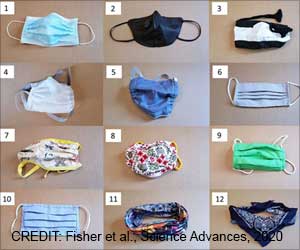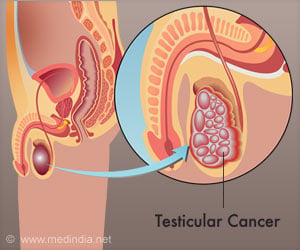FREE RADICALS AND ANTIOXIDANTS – CURRENT STATUS PART - II
DR T R RAMANUJAM M.D., C.MI.Biol (Lond)
GENERAL PRINCIPLES OF ANTIOXIDANT THERAPY
INDICATIONS FOR ANTIOXIDANTS THERAPY
CURRENT STATUS OF ANTIOXIDANTS
INDICATIONS FOR ANTIOXIDANTS THERAPY
-
Atherosclerosis:
The oxidative – modification hypothesis of atherosclerosis stimulated interest in natural antioxidant defense of LDl particles. Various studies with probucol, absorbic acid, Vit E and beta carotene have shown that antioxidants will reduce atherosclerosis. Natural flavonoids also showed similar results. Diets rich in flavonoids appear to be protective against ischemic heart disease. The potential for polyphenolic flavonoids in red tends to increase the resistance of LDL to oxidation and an increase in serum antioxidant activity has recently been demonstrated.
-
Neurological
disease:
Oxidative stress is the result of excessive production of the reactive species especially during neuronal hypoxia or trauma and free radical induced lipid peroxidation appears to be a significant factor in various excitoneurotoxicity. Recently NO (Nitric Oxide) and endogenous CO (Carbon monoxide) role in the pathogenesis of Oxidative damage in excitoneurotoxicity have been revealed. Excess NO by reacting with superoxide free radical generate PEROXYNITRATE a highly toxic anion (during brain ischemia). Oxidative stress plays significant role in Parkinson's disease, ALS, Senile dementia (Alzheimer). Selegeline a MAO-B inhibitor prevents the progress of the disease more probably by decreasing prevential radical formation. Recently a drug Riluzole - inhibitor of glutamate release, has been found to possess antioxidant activity. Lazaroids like tirilazad mesylate and tocopherol (slow acting) show promise as neuroprotective agents.
-
Ischemic
Reperfusion Injury:
Reperfusion process itself appears to represent a hazard. The restoration blood supply to previously ischemic area promotes release of oxygen derived free radicals resulting in damage to sacroplasmic reticulum and other membranes leading of impairment in handling of Ca & other ions. Clinical sequelae of myocardial reperfusion include post-ischemic stunning (contractile dysfunction), reperfusion arrhythmias, and endothelial damage (ample evidence in Humans). The finding that streptokinase thrombolysisis associated with excess mortality in first 24 hrs compared with placebo simulates interest in biochemical events assoc with reperfusion. Because of the poor antioxidant status in vascular disease, the use of antioxidants becomes mandatory.
-
Transplantation:
Pathogenesis of rejection is complex and multi factorial involving damage to endothelium and subsequent hemodynamic alterations and for this reason antioxidant therapy becomes but also the donor. Human recombinant SOD seems more promising Transplant is one area where antioxidant therapy is rather mandatory.
-
Diabetes
Mellitus:
Since the complication of DM is as aresult of poor glycemic control which favour increased production of free radical leading to microvascular or macrovascular complications. Diabetes have well documented defect in antioxidant protection and for this reason DM is a suitable disease for antioxidant supplementation. Antioxidants like ascorbic acid and tocopherols inhibit glucose auto oxidation and inhibit glycation of serum proteins. Antioxidant therapy seems to be more promising.
- Inflammatory disease: In inflammation neutrophils and macrophages by virtue of antibacterial killing mechanisms generate superoxide, H2O2, and hypochlorite resulting in activation of proteases and tissue damage. In Rheumatoid Arthritis, Free radical activity in the inflamed joints contribute to their destruction. Even in inflammatory bowel diseases the role of sulfasalazine can probably be attributed to its antioxidant activity. Similarly in Acute and chronic, pancreatitis Oxidative injury has been evidenced. Preliminary trials have suggested the frequency and severity of attacks can be reduced significantly.
- Hypertension: HT has been associated with lowered levels of ascorbic acid and infusions antioxidants have reduced blood pressure. In fact many of the antihypertensive agents belonging to ACE inhibitors, Calcium antagonists, and beta blockers have in addition free radical scavenging effects. It has been claimed that the beneficial effects of newer Ca antagonists, and beta blockers exhibit free radical scavenging effects as evidenced by their Reno protective effects. Further trials are needed for definitive conclusion.
- Potential benefits of antioxidant has been reviewed in pathological problems like Sepsis and Shock that cause hypoxia of vital organs, inflammation and endothelial damage. Even with intensive therapy many patients go on to develop - AdultRespiratory Distress syndrome. Again, neutrophil derived oxidants appear to be a significant factor. Although antioxidant therapy may be therapeutically attractive and may have some local benefits. Preventing the recruitment of activated neutrophils in the lungs seems to be the approach most likely to succeed.
- Cancer: Epidemiological studies and cohort studies have suggested that persons with high dietary antioxidant intake are less likely develop cancer, particularly Lung cancer but unfortunately benefits appear to be relatively small. Smoking stands out amongst identifiable risk factors for cancer within the population. DNA damage induced by cigarette smoke can be prevented by antioxidants. No doubt smokers have well documented defects in antioxidant protection. However, a recent Finnish study examined the effect of tocopherol-beta carotene, both or neither when given to 29,133 middle aged male smokers who were smoking for over 6 yrs. NOT ONLY THE TRIAL FAILED TO SHOW ANY PROTECTION But IN FACT SHOWED SIGNIFICANTLY MORE NEW CASES OF LUNG CANCER IN THE BETA CAROTENE TREATED GROUP. The disappointing result strikes a note of CAUTION and serves to remind that even NATURAL antioxidant vitamins may have some HARMFUL effects when prescribed in supra homeostatic quantities (Supra-physiological). In this trial beta carotene concentration Was raised ten fold. Therefore inadvertent use of antioxidant has to be avoided unless the drug or antioxidant is safe beyond doubt. In conclusion antioxidants have definitive role not only in treatment of cancer but also in its prevention.
- AIDS: Patients with AIDS have reduced immunity and therefore reduced systematic Glutathione levels. Tumor Necrosis Factor alpha (TNF alpha) under normal conditions acts as a stimulus to the generation of superoxide dismutase and the role of various cytokines are inhibited in AIDS. The Thiol donating compound acetyl cysteine has also been shown to inhibit viral replication and potentiate the effect of Azidothymidine. There is yet sufficient evidence to suggest AIDS patient will benefit from antioxidant therapy. However, the dietary intake of vitamins and other micronutrient has a significant influence on general immunocompetence – an antioxidant effect?
- Other diseases: Tocopherol definitely seems to limit the Retinopathy of pre-maturity consequent to the exposure of high concentration of oxygen. Reduction in the incidence of intraventricular hemorrhage and prevention of neonatal respiratory distress syndrome are well supplemented by Tocopherol. Senile macular degeneration and cataract are probably preventable by proper nutritional supplements of antioxidants. Tocopherols and Retinoids play a substantial role not only in the treatment of skin disorders associated with oxidant damages but also prevention of ageing has been demonstrated in few of the studies, Supraoxide and peroxidase effects are proved in the process of aging and antioxidants have definitive role to play in PREMATURE aging.
Imbalance of oxidative damage and antioxidant defense has been described in Congestive cardiac failure, Chronic renal failure. Eclampsia, Chronic adult peritonitis, respiratory disease and a variety of hematological disorders and therefore there exists a rationale in using antioxidants in these conditions. But the major question is in which condition antioxidant should these drugs be prescribed and what should be the optimum dose. Controlled clinical studies are mandatory before one can conclude the Antioxidant therapy for the above conditions.











